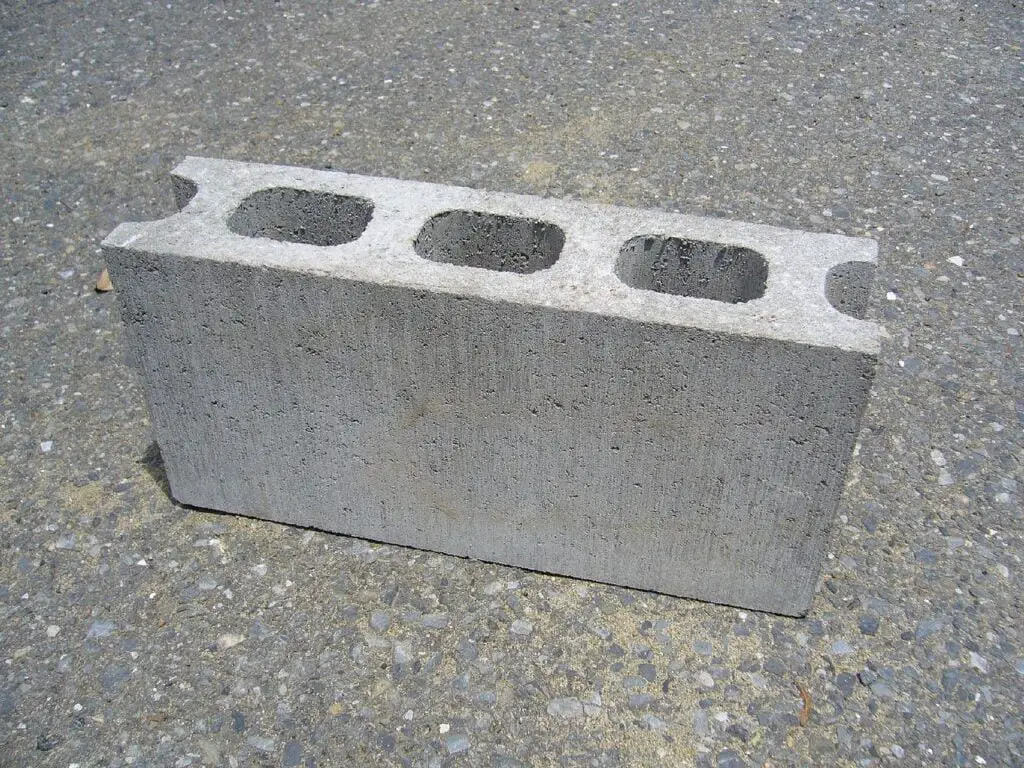Concrete blocks, also known as cinder blocks or cement blocks, are available in many different shapes and sizes. Portland cement, sand, gravel, and water are used to make them. When the mixture is wet, it becomes paste-like and can be shaped into a block. It hardens and becomes stone-like as it dries. Concrete blocks are divided into two categories: hollow and solid.
Hollow Blocks
One or more hollow cores exist in hollow concrete blocks. These cores diminish the block’s total cross-sectional area by at least 25%. A hollow-core concrete block is generally more than 50% solid. Hollow concrete blocks are available in full and half sizes. The rectangular full-size bricks have two cores. Half-size blocks feature a single core and are cubical in shape.
100 mm x 200 mm x 400 mm, 150 mm x 200 mm x 400 mm, and 200 mm x 200 mm x 400 mm are all examples of hollow concrete blocks. The most prevalent hue for these blocks is gray, however they can also be found in tan and dark red.
In the Philippines, Concrete Hollow Blocks (CHB) are one of the most widely utilized walling materials. Some of the reasons for this are their inexpensive cost when compared to other materials and the ease with which they can be installed by semi-skilled laborers. The lateral loads (pushing or pulling forces from a typhoon or earthquake) are particularly damaging to CHB walls. Inside the CHBs, steel reinforcing bars can be added vertically and horizontally to strengthen their resistance to lateral loads.
Solid Blocks
Solid concrete blocks, despite their name, are not always solid. They are simply less hollow than the hollow blocks that are commonly used. Solid blocks feature core holes that are less than a quarter of the block’s cross-sectional area.
Fully Solid Blocks
Some of the solid concrete blocks are completely solid. Some of these blocks are referred to as stacking stones, while others are referred to as paving blocks. To simulate the appearance of natural stone, stackable stones have two sides that are rough and uneven. The remaining four sides are exactly flat and parallel to one another. They are used to quickly construct robust walls that appear to be constructed of stone. Natural stone is frequently uneven and difficult to join. Paving blocks are level and regular, and are designed to be assembled like tiles to create routes.
Uses of Hollow Blocks
Large buildings, such as boundary fences, are frequently constructed with hollow blocks. The smaller amount of concrete used to produce each block results in significant cost savings for the entire wall’s components. They are also easy to lift due to their reduced weight. If the design asks for it, the hollow cores also provide enough space to incorporate reinforcing elements like steel bars. Water pipes and electricity conduits are sometimes run through them. For paving and other jobs where holes would be harmful or impractical, fully solid blocks are employed. In addition, solid blocks can carry more mortar between them than hollow blocks.
You can see the prices of concrete hollow blocks and other materials here.


HELLO
PLEASE QUOTE DELIVERED TO PIER NORTH HARBOR
2000 PCS. HOLLOW LBOCK CONCRETE, 4 X 8 X 16
THANKS.
ROLLY/MANILA OVERSEAS INC.
TEL:6328004227
Thank you for letting us know that concrete hollow blocks are popularly used as walling materials since they’re quite inexpensive and easy to install. I imagine if you need concrete barriers for your industrial property, it would be a good idea to consider hollow blocks if you’re working on a budget. I’ll keep this in mind as an option while I look for a contractor to hire in case I ever need concrete barriers next time.